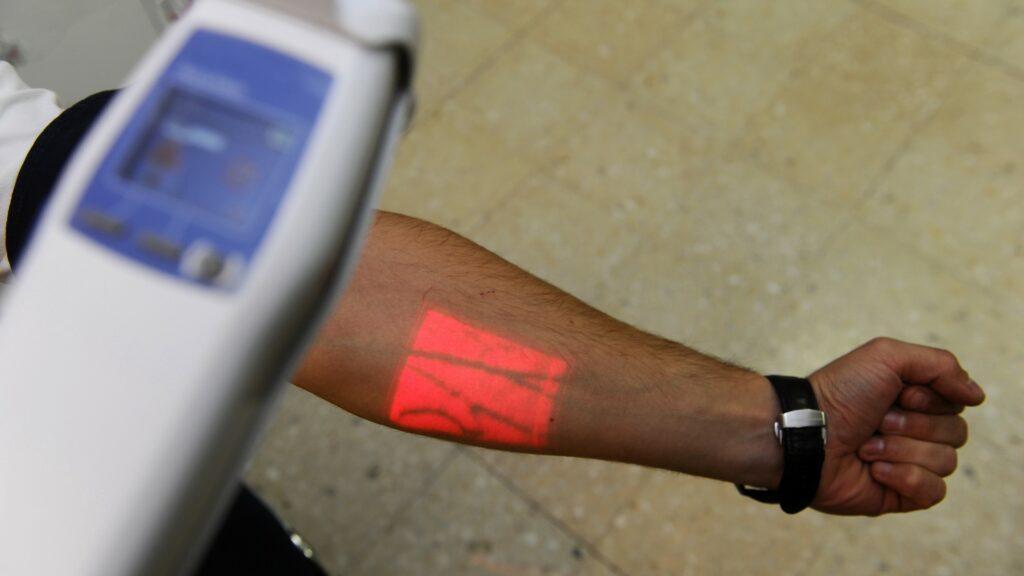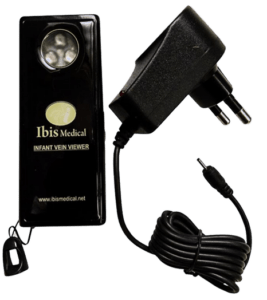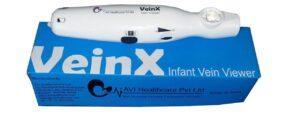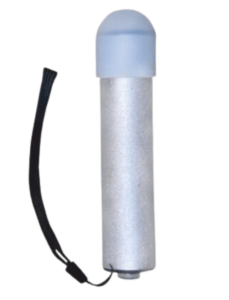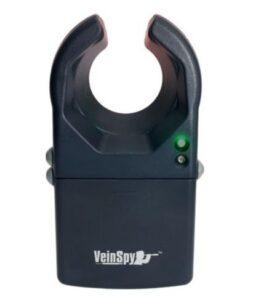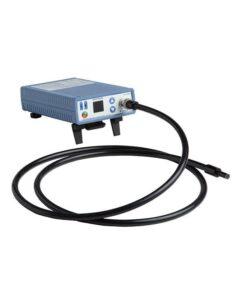Vein finders have emerged as game-changers in the healthcare industry, revolutionizing the way medical professionals locate veins for various procedures. These advanced devices employ cutting-edge technology to improve vein visualization, leading to enhanced accuracy, reduced discomfort, and increased success rates. In this short introduction to vein finders, we explore their significance and impact on modern healthcare practices.
A Detailed Review of Vein Finders Devices
In the fast-paced world of medical technology, vein finder devices have emerged as indispensable tools for healthcare professionals. To assist you in making an informed decision, we present a detailed review of vein finder devices, highlighting their key features, performance, and suitability for various medical applications. Dive into the finer details and unlock a wealth of information to enhance your understanding of these remarkable devices.
- Advanced Imaging Technology: Explore the imaging technology utilized by vein finder devices, such as infrared, near-infrared, or multispectral imaging. Understand how these technologies contribute to accurate vein detection and improved patient outcomes.
- Ease of Use and Ergonomics: Delve into the user experience offered by different vein finder devices. Evaluate the ergonomics, user interface, and ease of operation to find a device that seamlessly integrates into your clinical practice.
- Vein Visualization Modes: Discover the various vein visualization modes available, including real-time imaging, color-coded displays, and adjustable brightness settings. Assess which modes best suit your specific requirements.
- Portability and Flexibility: Consider the portability and flexibility of vein finder devices, examining factors such as size, weight, and battery life. Determine whether a handheld or mounted device aligns with your practice needs.
- Compatibility and Connectivity: Evaluate the compatibility and connectivity options offered by vein finder devices. Assess their ability to integrate with other medical equipment and software systems for seamless data management.
- Clinical Applications: Gain insights into the diverse clinical applications of vein finder devices, ranging from venipuncture and intravenous access to cosmetic procedures and vascular surgery. Identify the device best suited to your medical specialty.
- User Feedback and Reviews: Explore real-world experiences shared by healthcare professionals who have used different vein finder devices. Consider their feedback and insights to gain a comprehensive understanding of device performance.
With our detailed review of vein finder devices, you can navigate the complex landscape of options available and make an informed decision. Stay at the forefront of medical technology and select a vein finder device that aligns with your clinical needs and practice requirements.
Portable Vein Finders: Expert Reviews
Unveiling the Advantages and Limitations of Handheld Vein Finders
Handheld vein finders have revolutionized the field of vein detection, offering portability and convenience to healthcare professionals. It’s critical to examine the benefits and drawbacks of these gadgets before making a choice. Here, we present an in-depth analysis of the advantages and limitations of handheld vein finders, empowering you to make an informed choice.
Pros
- Portability: Handheld vein finders provide unmatched portability, allowing medical professionals to easily navigate healthcare settings and locate veins with greater flexibility.
- Ease of Use: These gadgets were made with ease of use in mind, with user-friendly interfaces and ergonomic constructions that promote efficient operation and reduce user fatigue.
- Real-time Imaging: Handheld vein finders offer real-time imaging, enabling instant visualization of veins during procedures. This feature enhances accuracy and helps save valuable time.
- Cost-effective: Compared to larger vein finder systems, handheld devices are often more affordable, making them a budget-friendly option for healthcare facilities.
- Versatility: Handheld vein finders cater to a wide range of medical applications, including venipuncture, intravenous access, and cosmetic procedures. Their versatility makes them suitable for various healthcare specialties.
Cons
- Limited Depth Perception: Due to their compact size, handheld vein finders may have limitations in accurately detecting deeper veins or veins located in challenging anatomical areas.
- Variability in Image Quality: The image quality produced by handheld vein finders may vary depending on factors such as device quality, lighting conditions, and patient characteristics, which can affect vein visualization.
- Operator Skill Dependency: Achieving optimal results with handheld vein finders may require practice and experience. Novice users may need additional training to fully utilize the device’s capabilities.
- Battery Life: Handheld vein finders rely on battery power, which may require frequent recharging or replacement during extended clinical sessions.
- Limited Additional Features: Handheld vein finders may have limited additional features compared to larger systems. Advanced functionalities, such as vein mapping or network connectivity, may be less common in handheld models.
By understanding the pros and cons of handheld vein finders, you can assess their suitability for your specific clinical needs. Consider factors such as portability, ease of use, and limitations in in-depth perception to make an informed decision.
How Vein Finders Technology Works
Wireless vein finders have emerged as game-changers in the medical industry, providing unparalleled convenience and efficiency in vein detection. Our experts have meticulously evaluated and handpicked the best wireless vein finders available, ensuring you make an informed choice for your clinical practice.
- Accurate and Reliable: Experience the next level of vein detection accuracy with wireless vein finders that offer consistent and reliable results. Say goodbye to guesswork and embrace precision.
- Seamless Connectivity: Enjoy seamless connectivity and effortless integration with wireless vein finders. These devices provide instant connectivity to your preferred medical equipment, optimizing your workflow.
- Enhanced Portability: Move freely around your medical facility with wireless vein finders that prioritize portability. Experience the freedom to navigate and locate veins without the limitations of cords and cables.
- Intuitive User Interface: The best wireless vein finders come with intuitive user interfaces, making them easy to operate for medical professionals at all levels of expertise. Experience a user-friendly design that streamlines your practice.
- Real-time Imaging: Stay updated with real-time imaging capabilities offered by wireless vein finders. Visualize veins with clarity and precision, facilitating accurate vein detection and minimizing patient discomfort.
Discover the unparalleled benefits of wireless vein finders and elevate your vein detection procedures to new heights. Choose from our carefully curated selection of the best wireless vein finders, and revolutionize the way you locate veins in a wirelessly connected world.
Vein Detection Techniques Explained
Vein detection techniques play a pivotal role in modern healthcare, facilitating accurate and efficient identification of veins for various medical procedures. In this comprehensive guide, we explore different vein detection techniques and explain how each method contributes to precise vein visualization. Gain valuable insights into the world of vein detection and broaden your understanding of these essential techniques.
Visual Inspection
- Description: Visual inspection involves the manual examination of the patient’s skin surface to identify visible veins. It relies on the healthcare professional’s observation skills and knowledge of typical vein patterns.
- Benefits: Visual inspection is a straightforward, non-intrusive procedure that needs no extra tools. It can provide initial information about vein location and size.
- Limitations: Visual inspection may be challenging in patients with fair or thin skin, as veins may not be clearly visible. It also lacks the ability to assess vein depth accurately.
Palpation
- Description: Palpation involves gently feeling the patient’s skin to locate veins by touch. Healthcare professionals apply light pressure and assess the vein’s resilience and pulsatility.
- Benefits: Palpation provides tactile feedback, helping to identify superficial veins. It can complement visual inspection and aid in confirming vein location.
- Limitations: Palpation may not be suitable for patients with deep or fragile veins. It requires skill and experience to accurately interpret the information obtained through touch.
Near-Infrared (NIR) Imaging
- Description: Near-infrared imaging utilizes infrared light to penetrate the skin and visualize veins. Hemoglobin in the veins absorbs infrared light, making the veins appear darker against the surrounding tissue.
- Benefits: NIR imaging offers real-time visualization of veins, allowing healthcare professionals to locate veins accurately, even in challenging conditions. It can help identify deeper veins that may not be visible through visual inspection alone.
- Limitations: NIR imaging may be affected by factors such as patient skin tone, lighting conditions, and device quality. It requires proper positioning and calibration to achieve optimal results.
Ultrasound
- Description: Ultrasound uses sound waves to create real-time images of veins beneath the skin’s surface. It provides detailed information about vein depth, size, and direction.
- Benefits: Ultrasound offers precise and reliable vein visualization, making it ideal for deep veins, difficult-to-access areas, and patients with obesity or edema. It aids in guiding procedures such as catheter insertion and vascular access.
- Limitations: Ultrasound requires specialized equipment and trained operators. It is frequently utilized in clinical settings, albeit not all healthcare settings might have easy access to it.
By understanding the different vein detection techniques, healthcare professionals can choose the most appropriate approach for their specific needs. From visual inspection to advanced imaging technologies, each technique contributes to improving vein detection accuracy and patient care.
The Importance of Vein Mapping
Vein mapping has emerged as a crucial tool in the realm of medical procedures, providing invaluable information about the intricate network of veins within the human body. This In this enlightening exploration, we delve into the importance of vein mapping and how it contributes to accurate diagnosis, treatment planning, and overall patient care. Discover the profound impact of vein mapping and elevate your understanding of its significance in the medical field.
Accurate Diagnosis and Treatment Planning
- Precise Vein Localization: Vein mapping enables healthcare professionals to accurately locate veins and assess their size, depth, and trajectory. With the use of this information, the best strategy for medical treatments like venipuncture, intravenous access, or surgical interventions can be determined.
- Patient-Specific Planning: Vein mapping provides individualized information about each patient’s unique vein anatomy. This allows healthcare professionals to tailor treatment plans, ensuring optimal outcomes and minimizing the risks associated with blind procedures.
Enhanced Procedural Efficiency
- Streamlined Workflow: Vein mapping streamlines the procedural workflow by providing a roadmap of veins to follow during medical interventions. It reduces the time and effort required to locate veins, resulting in improved efficiency and patient throughput.
- Reduced Complications: By accurately identifying veins through mapping, healthcare professionals can minimize complications such as accidental arterial puncture or infiltration, leading to enhanced patient safety and reduced healthcare costs.
Increased Patient Comfort and Satisfaction
- Minimized Discomfort: Vein mapping helps healthcare professionals select veins that are more visible, accessible, and less prone to complications. This reduces the need for repeated needle insertions, minimizing patient discomfort during venous procedures.
- Informed Patient Communication: Vein mapping empowers healthcare professionals to explain the procedure to patients in detail, instilling confidence and fostering trust. Patients are more likely to be satisfied with their experience when they understand the rationale behind vein selection and the anticipated benefits.
Enhanced Training and Education
- Learning Tool: Vein mapping serves as a valuable educational resource for medical students, trainees, and healthcare professionals. It allows them to study the intricate vein anatomy, understand variations between individuals, and develop proficiency in vein identification.
- Skill Development: Through vein mapping, healthcare professionals can refine their vein visualization skills, improving accuracy and efficiency in procedures requiring vein access.
Unlock the full potential of vein mapping and revolutionize your medical practice. Embrace the power of comprehensive vein assessment, accurate diagnosis, and patient-centric treatment planning.
Enhancing Vein Visualization
Enhancing vein visualization is a key focus in the medical field, as it plays a crucial role in improving the success rate of procedures and patient comfort. By utilizing innovative techniques and technologies, healthcare professionals can achieve accurate and efficient vein detection while minimizing patient discomfort. In this comprehensive guide, we explore cutting-edge methods to enhance vein visualization and revolutionize the way veins are located.
Near-Infrared (NIR) Imaging
- Description: Near-infrared imaging utilizes infrared light to penetrate the skin and visualize veins. By capturing the reflected light, healthcare professionals can obtain a clear image of the veins, enhancing their visibility.
- Benefits: NIR imaging provides real-time and high-resolution vein visualization, even in challenging conditions. It offers improved contrast and clarity, making it easier to identify veins accurately.
Augmented Reality (AR)
- Description: Augmented reality combines real-world views with computer-generated overlays, superimposing vein images onto the patient’s skin. This technology enhances the visualization of veins, aiding healthcare professionals during procedures.
- Benefits: AR allows for precise vein localization and guidance, reducing the chances of error. It improves accuracy and procedural efficiency while minimizing patient discomfort and potential complications.
Vein-Enhancing Devices
- Description: Vein-enhancing devices use various techniques such as infrared light, vein contrast enhancement, or image processing algorithms to enhance the visibility of veins. These devices provide a clearer and more pronounced representation of the veins for better visualization.
- Benefits: Vein-enhancing devices improve vein detection accuracy and reduce the need for multiple attempts. They assist healthcare professionals in locating veins quickly and efficiently, leading to improved patient satisfaction and procedural success.
Ultrasound-Guided Techniques
- Description: Ultrasound technology is used in conjunction with vein detection to provide real-time imaging of veins beneath the skin. Healthcare professionals can visualize the veins on a screen, guiding their needle insertion or catheter placement.
- Benefits: Ultrasound-guided techniques offer precise visualization of veins, especially deep and difficult-to-access ones. They increase procedural success rates, minimize complications, and enhance patient safety.
By embracing these innovative techniques, healthcare professionals can elevate vein visualization to new heights. Improved vein detection not only enhances procedural outcomes but also contributes to patient satisfaction and overall healthcare quality.
The Role of Vein Finders for Nurses
Vein finders have become invaluable tools for nurses in various healthcare settings, revolutionizing the way veins are located and accessed. These devices offer a range of benefits, enabling nurses to enhance patient care, improve procedural efficiency, and minimize patient discomfort. In this informative guide, we explore the vital role of vein finders for nurses and their impact on healthcare practices.
Accurate Vein Detection
- Description: Vein finders aid nurses in accurately locating veins, especially in patients with difficult venous access. By providing real-time imaging or vein visualization, these devices assist nurses in identifying suitable sites for procedures such as venipuncture or intravenous cannulation.
- Benefits: Accurate vein detection minimizes the need for multiple attempts, reducing patient discomfort and potential complications. It improves procedural success rates and saves nurses’ time, optimizing their workflow.
Improved Patient Comfort
- Description: Vein finders contribute to enhanced patient comfort during vein-related procedures. By allowing nurses to locate veins swiftly and accurately, these devices reduce patient anxiety, pain, and the overall duration of the procedure.
- Benefits: Improved patient comfort leads to better patient experiences and increased satisfaction. It promotes a positive nurse-patient relationship and improves patient compliance with future procedures.
Enhanced Efficiency and Time Management
- Description: Vein finders streamline the process of vein detection, enabling nurses to locate veins more efficiently. These devices reduce the time spent on vein assessment and increase overall procedural efficiency.
- Benefits: Enhanced efficiency enables nurses to handle a higher patient volume, improving healthcare facility productivity. It allows nurses to allocate their time more effectively and attend to other patient care tasks promptly.
Skill Development and Confidence
- Description: Working with vein finders helps nurses develop their vein detection skills and build confidence in performing venous access procedures. The real-time imaging and visualization provided by these devices contribute to skill refinement and proficiency.
- Benefits: Skill development and increased confidence enhance nurses’ professional growth and job satisfaction. They enable nurses to provide high-quality care and contribute to positive patient outcomes.
Nurses play a pivotal role in healthcare, and vein finders empower them to deliver exceptional patient care. By utilizing these devices, nurses can improve vein detection accuracy, enhance patient comfort, optimize time management, and boost their professional competence.
Ensuring Safety with Vein Finders
Vein finders are powerful tools that aid in vein detection, but ensuring their safe and appropriate use is paramount in healthcare settings. Healthcare professionals must adhere to guidelines and take necessary precautions to maximize patient safety and minimize potential risks. In this comprehensive guide, we explore key considerations for ensuring safety when using vein finders.
Proper Training and Competence
- Description: Healthcare professionals should receive adequate training on the use of vein finders before incorporating them into their clinical practice. Competence in handling and operating these devices is crucial to ensure safe and accurate vein detection.
- Guidelines: Training programs should cover device operation, patient assessment, infection control measures, and potential complications. Regular competency assessments and refresher training sessions should be conducted to maintain proficiency.
Patient Assessment and Selection
- Description: Prior to using a vein finder, healthcare professionals must perform a thorough patient assessment. This includes evaluating the patient’s medical history, skin condition, allergies, and any contraindications for vein finder use.
- Guidelines: Patients with known sensitivities to light or skin-related conditions should be carefully evaluated for the suitability of vein finder use. Alternative vein detection methods should be considered if the patient’s condition poses a risk.
Infection Control Measures
- Description: Vein finders, like any medical device, should be properly cleaned and disinfected between uses to prevent cross-contamination and reduce the risk of infections.
- Guidelines: Follow facility-specific protocols for cleaning and disinfecting vein finders. Ensure that the device is compatible with the recommended disinfection agents and that the cleaning process is thorough and consistent.
Patient Privacy and Dignity
- Description: Maintaining patient privacy and dignity during vein detection procedures is essential. Respect patient confidentiality and provide appropriate draping or coverings to ensure their comfort and preserve their modesty.
- Guidelines: Communicate clearly with the patient, explaining the purpose and process of vein detection. Obtain informed consent and address any concerns or questions they may have. Maintain a professional and respectful demeanor throughout the procedure.
By adhering to these safety guidelines, healthcare professionals can maximize patient safety and minimize potential risks associated with vein finder use. Ensuring proper training, patient assessment, infection control measures, and upholding patient privacy contribute to a safe and secure clinical environment.
Vein Finders from Leading Indian Manufacturers
Infant Vein Viewer
The Infant Vein Viewer, manufactured by Ibis Medical Equipment and Systems Private Limited, is a leading product in the realm of neonatal transilluminators. Designed to assist healthcare providers in locating veins in newborns, this handheld device offers a simple and cost-effective method for visualizing superficial veins and facilitating the insertion of needles. Its innovative design, enclosed in durable polyacrylate material, ensures excellent heat and impact resistance. The compact and convenient design, coupled with the O-shaped LED illuminator, provides bright and high-definition vein visualization. The device also offers intensity control, allowing healthcare professionals to adjust the brightness according to their needs.
VeinX
Developed by AVI Healthcare Pvt. Ltd., the VeinX is a cost-effective and clinically validated vein finder designed specifically for neonatal vein access. With its trans-illumination technology, VeinX allows healthcare professionals to map veins, identify valve locations, and determine the optimal sites for safe vein access. This portable device offers versatility, enabling veins to be located and accessed from any area of the body. Its compact and streamlined design, coupled with an easy-grip handle, ensures effortless handling. Equipped with a bright red focused LED, the intensity of the illumination can be adjusted to optimize visualization. Additionally, VeinX features universal USB charging, low battery indicators, and charging status indicators for convenient use.
Clearvein
Monarch Healthcare presents Clearvein, a cutting-edge vein finder device designed to simplify the process of locating blood vessels for medical procedures. This portable device is suitable for use on hands, arms, feet, and legs, providing healthcare professionals with accurate vein visualization for punctures or injections. Clearvein features a rechargeable inbuilt battery, ensuring consistent performance. Its focused bright red LED, accompanied by a cap to control the spread intensity, ensures clear and precise vein visualization. The device is equipped with an Android charger and Android double-pin charging for convenient and versatile power options. Its anti-scratch body guarantees durability and reliability, while its user-friendly design makes it highly portable and easy to use.
VeinSpy
Tulip Diagnostics (P) Ltd. introduces VeinSpy, an advanced vein finder that optimizes needle insertion site selection and reduces the need for multiple needle pricks. This innovative device streamlines venous access procedures, minimizing delays in therapy and reducing patient pain and discomfort. VeinSpy’s advanced technology enables healthcare professionals to select the most suitable insertion site while avoiding nerves and muscles. This results in improved patient satisfaction, enhanced comfort, and minimized risk of hematoma formation. By facilitating precise and accurate needle insertion, VeinSpy ensures efficient and effective medical procedures.
nice 4050 M:
nice Neotech Medical Systems Pvt. Ltd. presents the nice 4050 M Fibre Optic Neonatal Transilluminator, a handheld device designed for neonates, infants, and children. This battery-operated compact device utilizes high-intensity cool LED light to visualize veins and aid in diagnosing conditions such as pneumothorax and hydrocephalus. The flexibility of the device’s long fiber optic cable allows for effortless positioning during use. With a focus on portability, the nice 4050 M is designed to ensure minimal heat interference and optimize usage hours. Equipped with a microcontroller, it provides failure alarms for the sensor and cooling fan, ensuring reliable and efficient performance.
Conclusion
Vein finders have revolutionized the field of vein detection in healthcare, offering a range of benefits for both healthcare professionals and patients. These advanced devices have transformed the way veins are located, improving accuracy, efficiency, and patient comfort during procedures like venipuncture and IV cannulation.
With their ability to provide real-time vein visualization and mapping, vein finders empower healthcare providers to make informed decisions, select optimal vein sites, and increase procedural success rates. Patients benefit from reduced discomfort, minimized complications, and an overall improved healthcare experience.
As technology continues to advance, vein finders are likely to evolve further, incorporating features such as wireless capabilities, improved portability, and advanced imaging algorithms. Ongoing research and development in this field hold the promise of even more precise and efficient vein detection techniques in the future.
It is essential for healthcare professionals to stay updated with the latest advancements in vein finder technology, undergo proper training, and follow guidelines for their safe and effective use. By embracing these innovative tools, medical practitioners can enhance patient care, streamline procedures, and contribute to better overall outcomes.
In this ever-evolving healthcare landscape, vein finders stand as a testament to the transformative power of technology in improving medical practices. By harnessing their potential, healthcare providers can continue to provide high-quality care while prioritizing patient comfort and safety.
